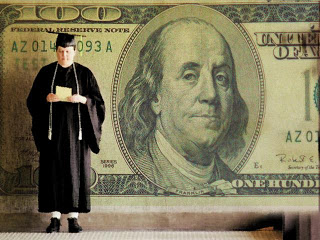Curse of the First ‘Austerity Generation’
Alan Nasser
Lew Rockwell
It was announced last summer that total student loan debt, at $830 billion, now exceeds total US credit card debt, itself bloated to the bubble level of $827 billion. And student loan debt is growing at the rate of $90 billion a year.
There are far fewer students than there are credit card holders. Could there be a student debt bubble at a time when college graduates’ jobs and earnings prospects are as gloomy as they have been at any time since the Great Depression?
The data indicate that today’s students are saddled with a burden similar to the one currently borne by their parents. Most of these parents have experienced decades of stagnating wages, and have only one asset, home equity. The housing meltdown has caused that resource either to disappear or to turn into a punishing debt load. The younger generation too appears to have mortgaged its future earnings in the form of student loan debt.
The most recent complete statistics cover 2008, when debt was held by 62% of students from public universities, 72% from private nonprofit schools, and a whopping 96% from private for-profit (“proprietary”) schools.
For-profit school enrollment is growing faster than enrollment at public schools, and a growing percentage of students attending for-profit schools represent holders of debt likely to default. In order to get a better handle on the dynamics of student debt growth, it is helpful to sketch the connection between the current crisis in public education and the recent rapid growth of the for-profits.
Crisis of Public Education Precipitates Private School Growth
Since the most common advise to the unemployed is to “get a college education,” and tuition at public institutions is at least half or less than private-school rates, public higher education institutions have been swamped with an influx of out-of-work adults. This has resulted in enrollment gluts at many state colleges. At the same time, tuition is increasing just when household income and hence the affordability of higher education are declining.
Here is how this scenario unfolds:
With few exceptions, state-funded colleges and universities set tuition rates based on policy and budget decisions made by state legislatures. High and increasing unemployment and declining wages have resulted in declining public revenues. This in turn leads to budget cut directives from legislative bodies to public higher education institutions, often accompanied by the authority to increase tuition.
For example, a 14% budget cut to an institution may be “offset” by giving the governing boards of the school the authority to raise tuition by a maximum of 7%. Often the imbalance created by a cut to the base budget and an increase in tuition is made worse by limits on enrollment. A state legislative body may cut an institution’s budget, allow it to increase tuition, but not provide per-student funding increases to keep pace with the accelerating enrollment demand.
RELATED ARTICLES:
4 Reasons to Change the Way We View Education
A Journey To Unschooling


Be the first to comment on "The Student Loan Debt Bubble"